A Haven for Wildlife in the Heart of St Mary Bourne
At Sustainable Bourne Valley (SBV), we are excited to introduce Hirst Meadow, our project dedicated to boosting biodiversity and creating essential habitats for our local wildlife.
This previously unused plot of land, located between Hirst Copse and the Woodland Burial Ground in St Mary Bourne, was generously granted to us by St Mary Bourne Parish Council. It is being transformed into a vibrant sanctuary for many of the valley’s threatened species, including bees, butterflies, moths, and birds.


As modern development and intensive agriculture continue to threaten natural habitats, projects like Hirst Meadow are vital in supporting local biodiversity. Pollinators such as bees, butterflies, and moths are crucial for the health of our ecosystems, yet their populations are in steep decline due to habitat loss and environmental pollution. By restoring native wildflower meadows and planting trees, we provide these species with the shelter and food they need to thrive.
Our goal to turn this once-neglected area into a flourishing, eco-friendly haven has been achieved with the help of the whole community including the children of St Mary Bourne School.
Sycamore Class from St Mary Bourne School have played an important role in bringing Hirst Meadow to life. Their enthusiasm and hands-on involvement have been inspiring!
On one of their visits, they planted 10 hazel and spindle trees and scattered a variety of wildflower seeds. The children had a fantastic time, especially when they got to stamp the soil to help the seeds settle.
On another occasion, they helped unveil the Hirst Meadow Information Board, which now provides visitors with valuable insights about the meadow’s purpose and the wildlife it supports. The children also placed recycled roof tiles around the edges of the meadow, creating shelters for hedgehogs, planted juniper trees, and made wildflower seed bombs to promote the further growth of native plants.
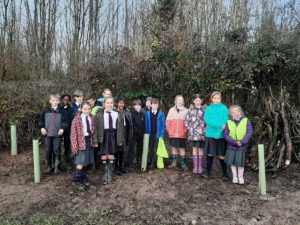
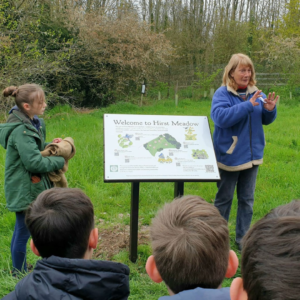
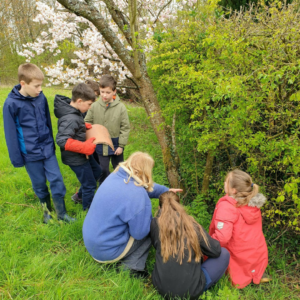



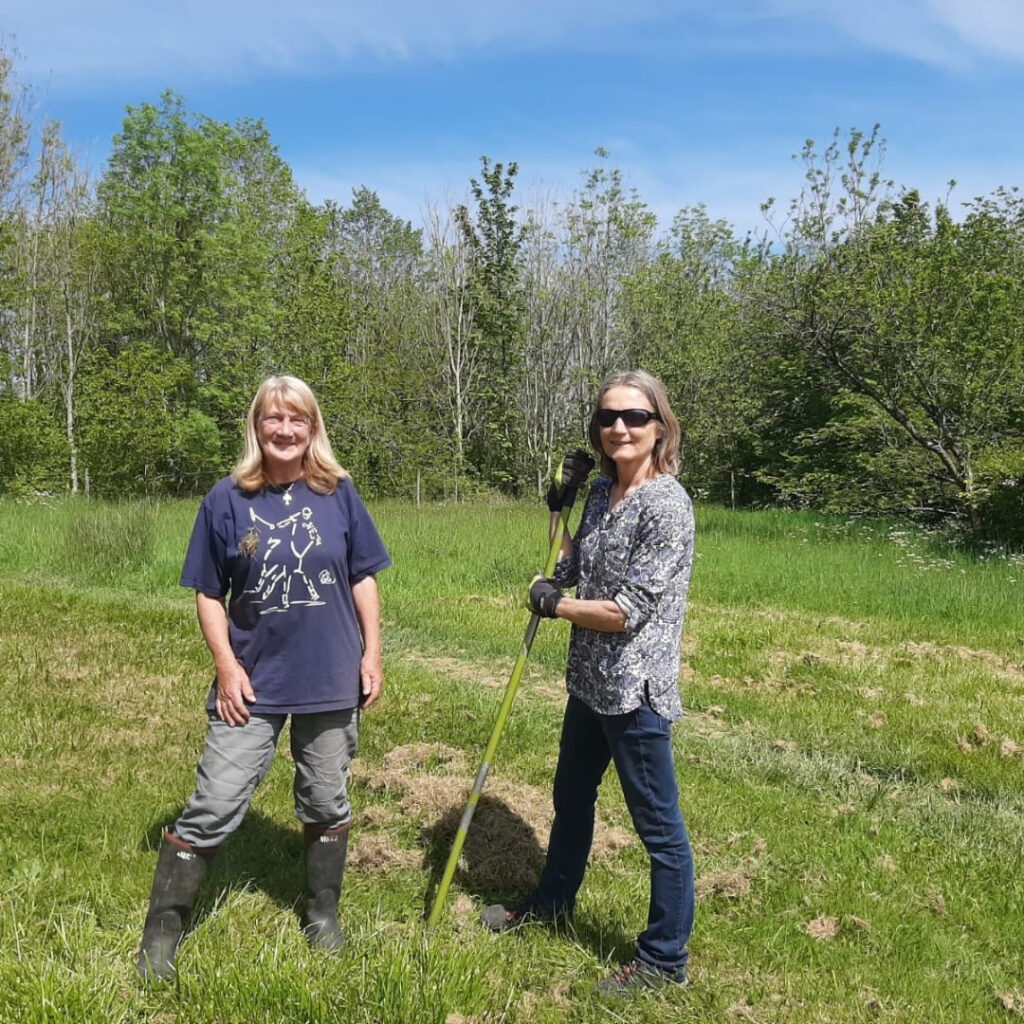




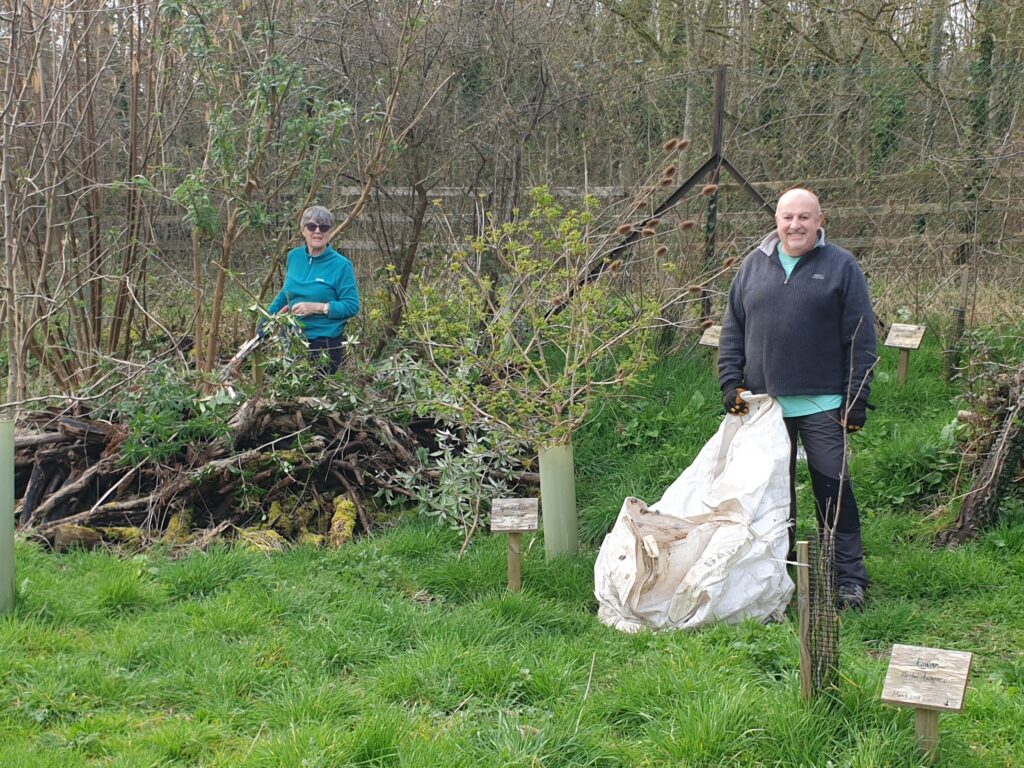


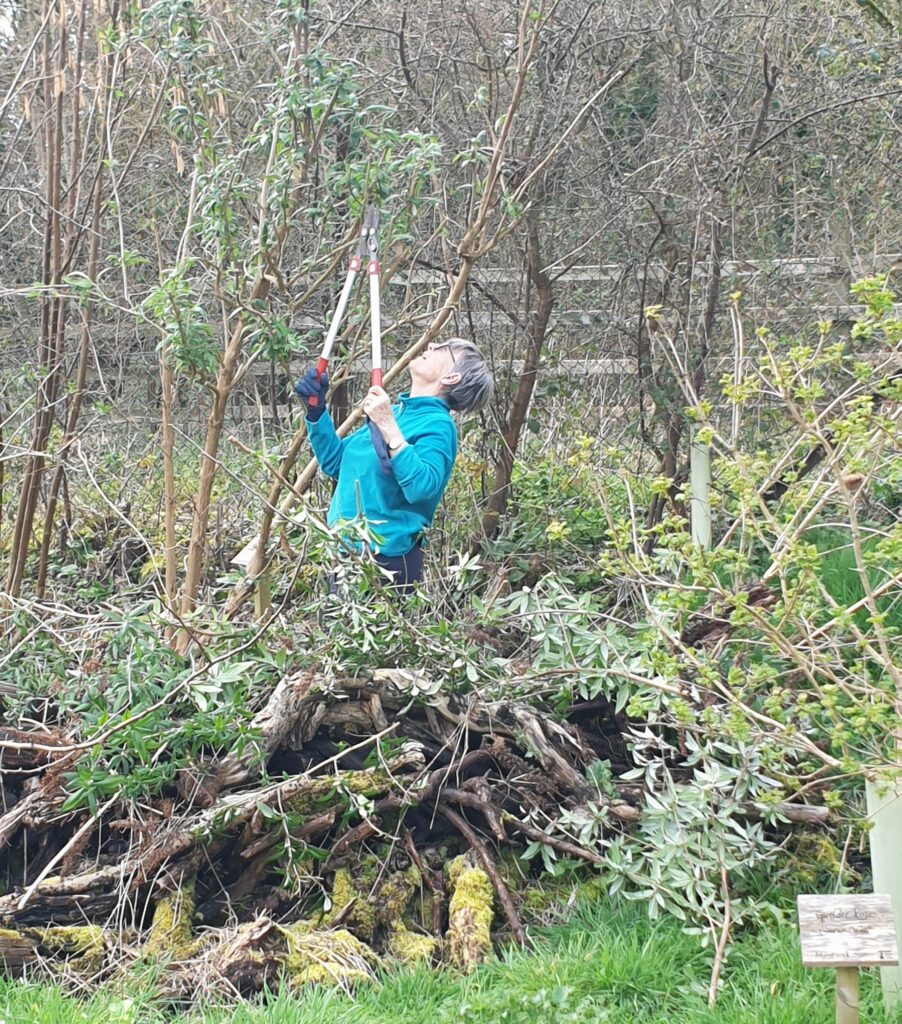
Hirst Meadow is truly a community project, and it’s a shining example of what can be achieved when we come together to support our local environment.
Every year, we host two Tidy-Up Sessions, one in the spring and one in the autumn. These events bring together community members to give Hirst Meadow some well-deserved care. Whether it’s planting, pruning, digging, trimming, collecting seeds, or cutting and raking, every volunteer plays a part in maintaining this beautiful space.
At Sustainable Bourne Valley, we are proud of the ongoing transformation of Hirst Meadow into a thriving sanctuary for wildlife, and want to extend a huge thank you to the hard work and dedication of our volunteers and local school children.
If you’re interested in joining us for the next tidy-up or want to be involved in future planting, we’d love to hear from you!
Take a Little Walk around Hirst Meadow
We’ve planted small trees, including crab apple, rowan, and hazel. Bird and bat boxes will soon be mounted on these trees to encourage wildlife to make their homes here. Among the trees, we’ve also added woodland flowers such as bluebells and snowdrops, which will bloom beautifully in the spring.
The slope closest to the houses has been transformed into a wildflower meadow. Building on the wildflowers already established, we’ve enhanced this area to support bees, butterflies, and other pollinators. During the summer months, this side of the path remains uncut to allow the flowers to thrive.
Come and explore:
- Small Native Trees.
- The Log Pile.
- The Blackberry Patch.
- The Wildflower Meadow.
- The Lush Meadow.
- The Ash Stump.

